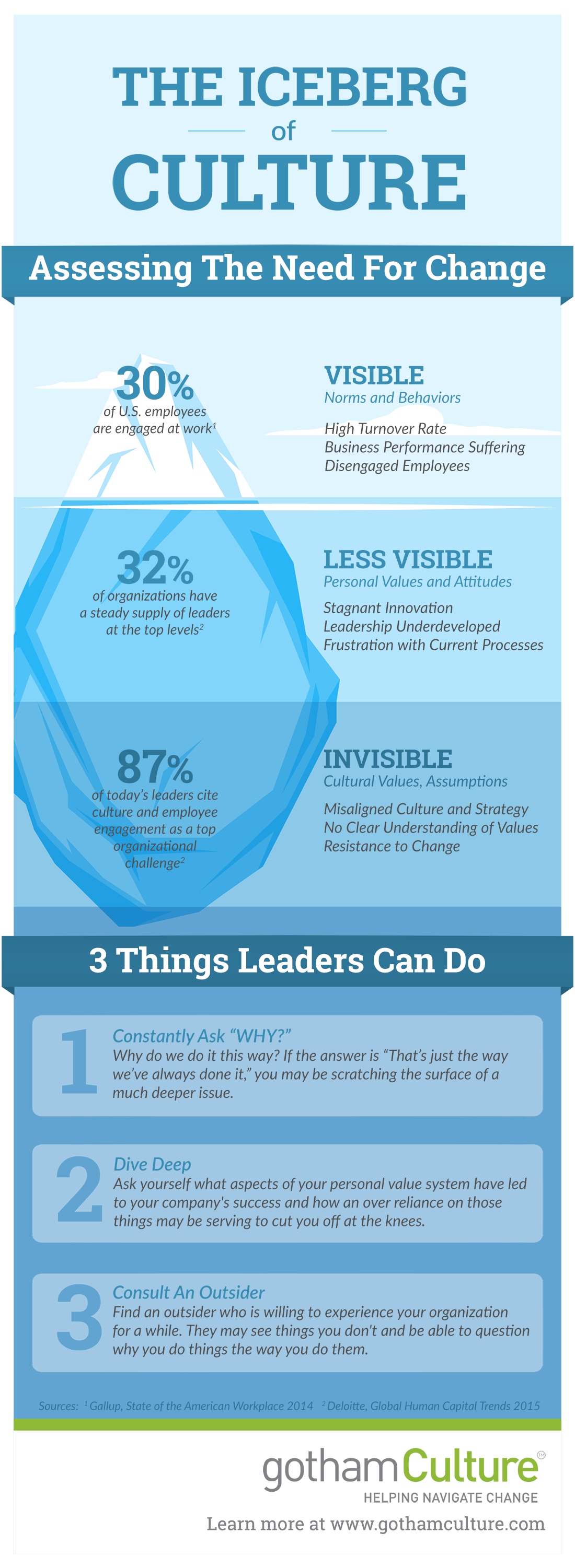By Chris Cancialosi & Stan Schneider
In 2011, the Foundation Strategy Group (FSG) released a seminal article by John Kania and Mark Kramer, which stimulated a much-needed resurgence of social reform initiatives that follow the collective impact paradigm. The concept of collective impact (CI) asserts that multiple, diverse agencies and groups must work together – not in their separate silos –to achieve the shared goal of effective and sustained social reforms – whether they are reforms aimed at children, disconnected youth, families, returning veterans, or other underserved groups.
What is the potential power of collective impact, and what internal cultural changes must occur before organizations can harness it?
In their paper, Kania and Kramer identified and defined five common components for organizations participating in successful social-change initiatives: a common agenda, shared measurement, mutually reinforcing activities, continuous communication, and the support of a “backbone” organization.
Understanding the fundamental components of collective impact efforts and actualizing and sustaining positive change as a result can be a significant gap to bridge for a variety of reasons. A key element in driving this success is the ability for participating organizations to evolve their cultures (their normal way of getting things done) in order to develop a new way of collectively engaging that drives results.
Among the central tenets of collective impact that we address here are the notions that participating organizations (i.e., the “collective”) share a common reform agenda and are willing to engage in mutually reinforcing activities. For example, if a community is interested in improving student achievement, proponents of collective impact would argue that the school system should not tackle this issue on its own – it should collaborate with a wide range of other public, philanthropic and community organizations who share a common interest in public education.
An often-cited exemplar of collective impact in action is the United Way-sponsored Strive Network, begun in Cincinnati, Ohio, and in northern Kentucky. The Strive Network has brought together a diverse set of community leaders to develop cradle-to-career supports for young people, resulting in promising gains in academic achievement and system-wide improvements in education.
Challenges In Bringing Collective Impact to Fruition
While collaborative engagement can be a significant contributor to social reform, we have learned, from our experience in collective impact initiatives, that it is often easier said than done for organizations to truly align themselves around shared goals – especially when these organizations have a history of competing against each other for funding, and, in some cases, for populations to serve.
To illustrate the point, the school choice movement has fueled unprecedented competition for students between and among public, charter, and private schools. If a city’s public, charter, and private school administrators were to participate in a collective impact initiative intended to improve citywide education outcomes, would they be able to subordinate their own institutional agendas (for expanding enrollments, for higher-performing or better-behaved pupils, etc.) in favor of what might prove to be in the best interests of the community’s students and families?
Similarly, could publicly operated child welfare agencies collaborate with private foster care agencies without bias in a public-private collective designed to systematize foster care referrals in the best interests of the children requiring placements? Perhaps, but doing so might require a substantial organizational culture change for some of the groups involved – and changing an organization’s culture can be a daunting challenge.
Collective Impact and Organizational Culture
 Implementing the kind of cultural change that may be required by organizations participating in (or asked to participate in) a collective impact initiative would necessitate a carefully planned and well-executed change management process. Such a process would require participating organizations to engage in new ways of approaching and interacting in their work in order to create new, mutually agreed upon ways of collaborating to drive the potential collective results that this model can provide.
Implementing the kind of cultural change that may be required by organizations participating in (or asked to participate in) a collective impact initiative would necessitate a carefully planned and well-executed change management process. Such a process would require participating organizations to engage in new ways of approaching and interacting in their work in order to create new, mutually agreed upon ways of collaborating to drive the potential collective results that this model can provide.
In order for the five foundational components of CI to truly add value in terms of tangible and sustainable collective gains, each member of the collective must adapt the way they “do business” in potentially fundamental ways that can grind against the existing beliefs and assumptions people have used as a guide for their work for a long time. Helping people to understand the changes, and reinforcing the idea that ways of working up until this point were not incorrect, can be beneficial in reducing the anxiety that people may be feeling when confronted with these transitions.
If organizational culture is defined as the shared beliefs and norms of behavior that an organization develops over time, it would not be surprising that, oftentimes, “right” might look different from group to group. The “right” behaviors that are adopted over time can look different from organization to organization primarily due to the fact that they each found their path to success through different means.
So long as this way of working yields success for the collective, it only serves to reinforce that those ways of working are, in fact, the right ways to do things. It is this basic tenet of culture that makes it so solid and difficult to evolve. If, through engaging in CI efforts, leaders are asking their people to behave in ways that misalign with the historically “right” way of doing things, a significant amount of anxiety can develop and resistance to such changes may well derail any hopes of achieving the benefits of such an effort.
“Are you telling me the way we’ve always done it is wrong?” “I know how to succeed in this current environment- I may not be as successful doing things a new way?” “If this worked so well for so long, why would we even think about changing the recipe?”
In order to effectively prepare their organizations to evolve existing systems and processes to fully reap the rewards that CI can offer, leaders must first set the conditions that will help their people challenge and adapt their thinking around these dramatic new ways of operating. Below are several critical considerations for leaders contemplating utilizing CI as a way of bringing about significant and sustainable reform.
Prepare Yourself.
- Examine your own beliefs, values and assumptions as a leader and try to gain an understanding of those with whom you may partner. Misalignment of fundamental beliefs about how things get done can be an enormous hurdle to try to work through, taking focus and effort away from your CI efforts.
- Come to grips with the fact that you may have to give up power for the greater good of the collective and be sure that you are okay with that prior to getting into a situation. When this happens it can undermine the benefit of the CI effort before it even has a chance to get off the ground.
Prepare Your Team.
- Take the time, as a team, to really understand the culture of your organization. What is truly valued? What unique philosophies about the work you do are fundamental to your organization’s identity? Having a clear understanding of your culture will help you understand the potential implications of attempting to partner with other organizations in a CI effort.
- Work with your team to discuss and come to grips with the possibility that by giving things up to the collective, the organization may in fact have a lot to gain. This may include giving up total control of how things are done, giving up data and information that was once held close to the vest, or relinquishing certain aspects of peoples’ roles in order to maximize the impact of the collective.
Prepare the Collective.
- Before diving into the work at hand, advocate that time and attention must be allocated to the formation of the new collective. Engage as many stakeholders as possible in discussions about the big picture, roles and responsibilities, and allow people to work through questions and concerns together.
- Help stakeholders at all levels to understand how their day-to-day efforts and new work methods are going to add value to the collective. Having a clear understanding of where you fit in can make a huge difference in peoples’ experiences with the new normal.
- Don’t make it a one-hit wonder. Set aside time along the way to continue to give people a chance to come together, to share lessons learned, and to take an active role in continuing to work through challenges that are affecting the collective.
- Collaborate early, at all levels, in identifying the systems and processes that will help smooth out interactions. Figure out how data will be shared in a way that makes all parties comfortable as trust develops.
As the collective impact model continues to gain momentum, and as valuable lessons are learned with regard to best practices for setting a solid foundation for success in such efforts, we submit that larger, cultural assessment and evolution be a key foundational component in this process. The cultural shift that would enable participating organizations to step out of their traditional silos to support the collective agenda seems a necessary condition for achieving the desired social impact, and is worthy of systematic attention from proponents of the collective impact movement.
This article was co-written by Stan Schneider, President and CEO of Metis Associates, Inc., a national, employee-owned consulting firm that brings over 36 years of experience in evaluation, information technology, and grant development to its work with a wide range of organizations committed to making a meaningful difference in the lives of children, families, and communities.











